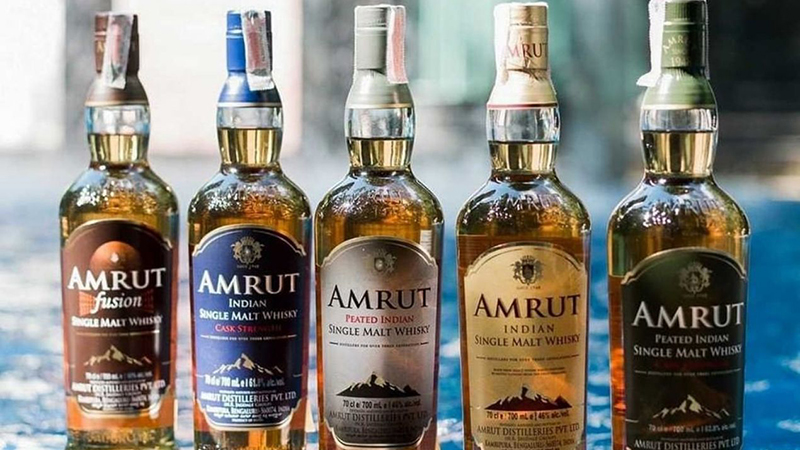Indian single malt whiskies are having their moment with brands like Amrut, Rampur and Paul John taking the world by storm. The drink has been a favourite of Indian tipplers since it was first distilled in the 1400s in Scotland, But in India, imports were limited until the era of liberalisation in the early nineties.
After restrictions were lifted, imported brands have ruled the Indian market for three decades. But not anymore. Premium Indian malts are coming of age, literally, and the Indian palate is maturing so to speak. Connoisseurs are now raising a toasf to desi malts ranging from Amrut and Paul John to Rampur and GianChand. Recently, India’s Indri Diwali Collector’s Edition 2023, a whisky from Piccadilly Distilleries, was awarded ‘Best Whisky in the World at the Whiskies of the World Awards.
Indian malt whiskies now account for nearly half of all premium single malts consumed in the country and are all set to overtake foreign brands by next year, according to the Confederation of Indian Alcoholic Beverage Companies. They are rated among the best in the world by several experts. Currently, desi malt whiskies are exported to over 60 countries.
While global single malt sales registered an annual growth of 35% in 2022, Indian single malt sales shot up by 142%. Scotch whiskey is defined as “a distilled spirit made in Scotland from cereals, water and yeast”, according to the Scotch Whiskey Association. It can be from one distillery or blended. A single malt is one entirely produced from malt in one distillery. Glenlivet and Mccallan are single malts while popular blended Scotch whiskies include Johnnie Walker and Chivas Regal.
According to reports, the market share of Indian brands has jumped to nearly 33% as of March 2022 from 15% five years ago. The report added that in 2022, the sales of Indian malt jumped 340 per cent, while the sales of Scotch rose 35%. The sales of Indian malt under Amrut brands have crossed Glenlivet 12 years old (YO), which was the highest-sold Scotch in 2022. The overall whisky market in India has been pegged at 242 million cases, around two-thirds of the overall spirits market.
The local demand for Indian scotch is driven by the higher disposable income among the young working population, especially in the metro cities. The share of the pie is still small, although it is growing.

Another report by global alcohol market analysts IWSR revealed that scotch sales in India have nearly doubled in the past two years on the back of higher consumption by millennials and a growing middle class. The report said that India consumed 7.5 million cases of Scotch whiskey in 2022 as compared to 3.9 million in 2020 (one case has nine litres).
The data also showed that in 2022, India became the world’s leading Scotch export destination by volume. In 2020, the country was second to France in Scotch imports in terms of volume. It is also clear from the data that seasoned drinkers prefer premium brands.
In India, one of the biggest factors in favour of single malt whiskey production is the weather. The rate of maturation of whiskey in warm climatic conditions like in India is up to five times faster than in Scotland. For example, a three-year-old whiskey in India is said to attain a maturation effect to that of a Scotch whiskey that is 9-15 years old.
The love of whiskey is not new and everyone has a good reason to drink. It is widely claimed that whiskey has many advantages when consumed in moderation. Researchers suggest that whisky aids in weight loss by decreasing the urge to consume sucrose and is a low-calorie beverage. Some research also claims whiskey contains high concentrations of ellagic acid, a potent antioxidant that may help neutralise cancer-causing reactive oxygen species.
Whiskey is also known as a winter drink with different therapeutic potential. If consumed in reasonable quantities for an extended period of time, it may help the body balance glucose, some studies suggest, which may decrease the risk of developing diabetes. But keep in mind that excessive drinking can be injurious to health and enjoy whiskey on the rocks, responsibly. – The writer is a senior journalist based in Bengaluru, India.


Leave a Reply